VERY RARE! WWII 1944 Operation Stalemate II - Palau Campaign (Koror Island & Malakal Island) CONFIDENTIAL Combat Intelligence Invasion Maps (Double-Sided)
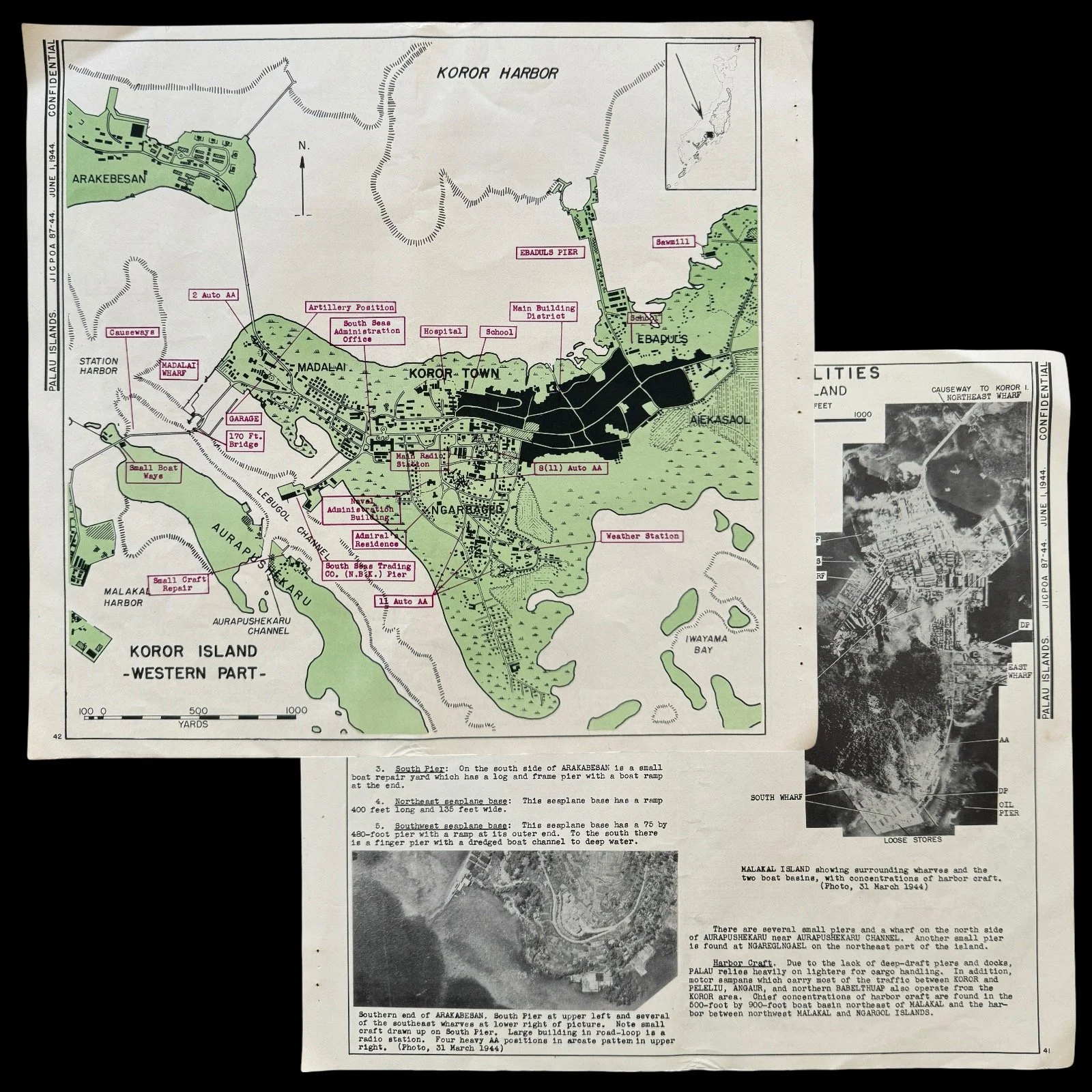
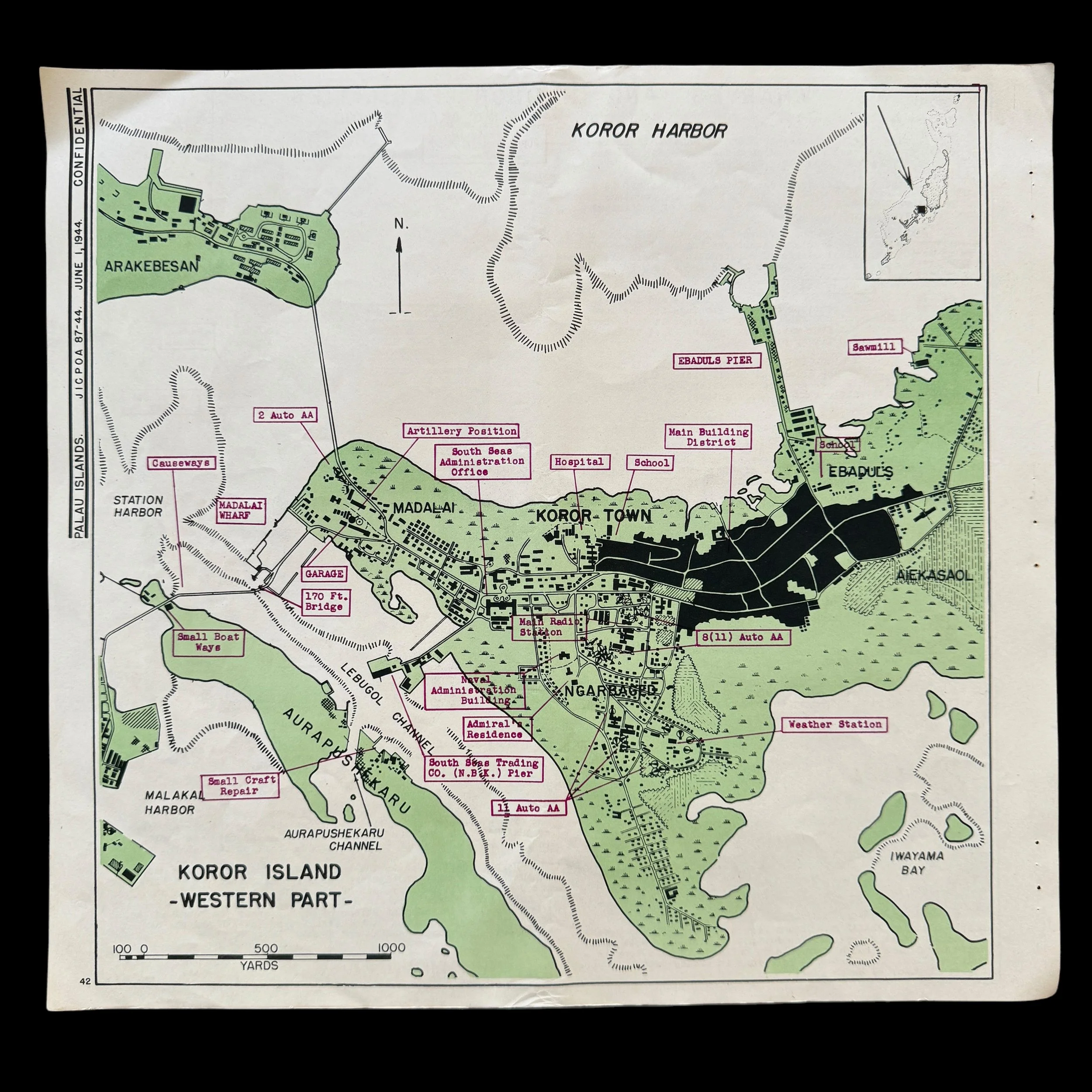


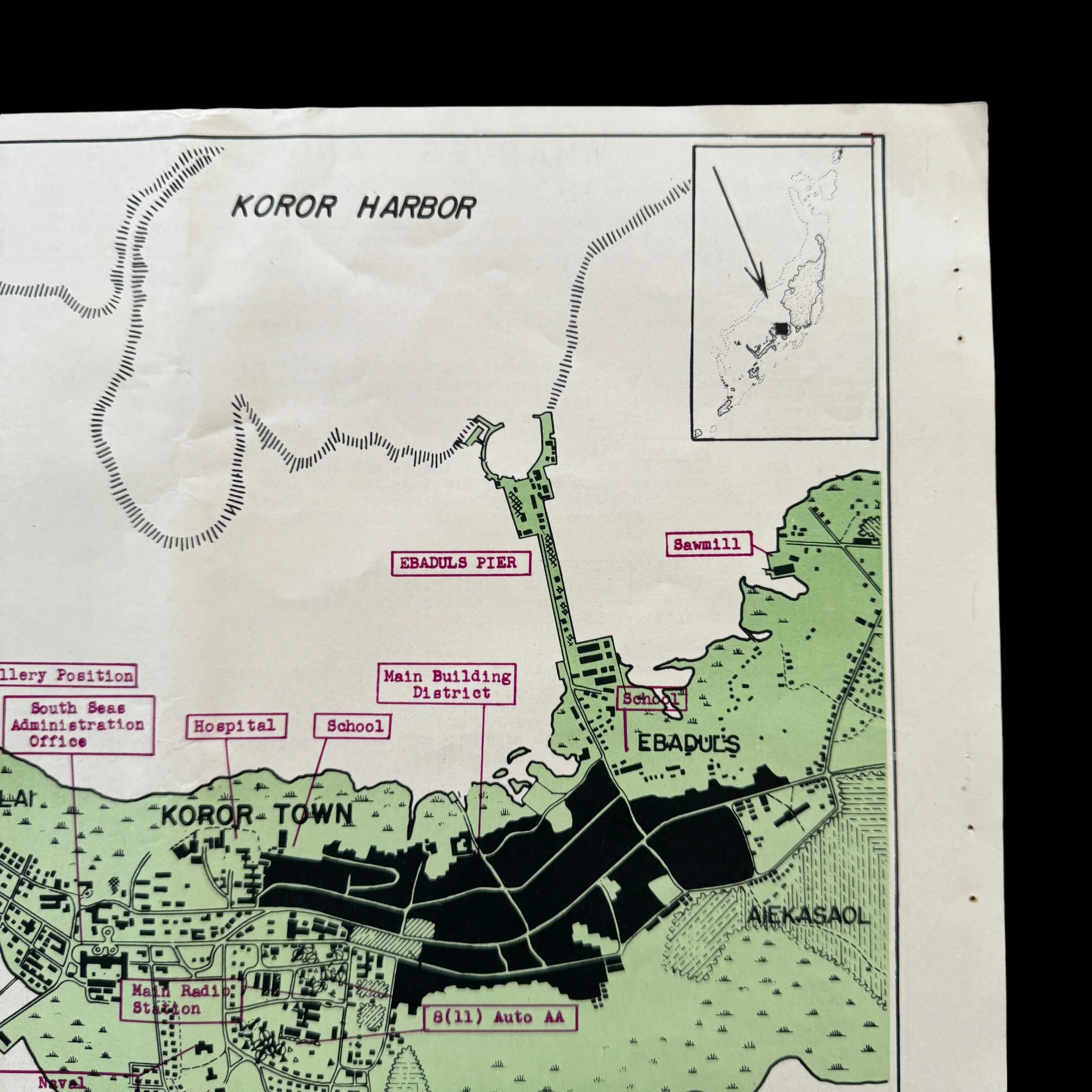



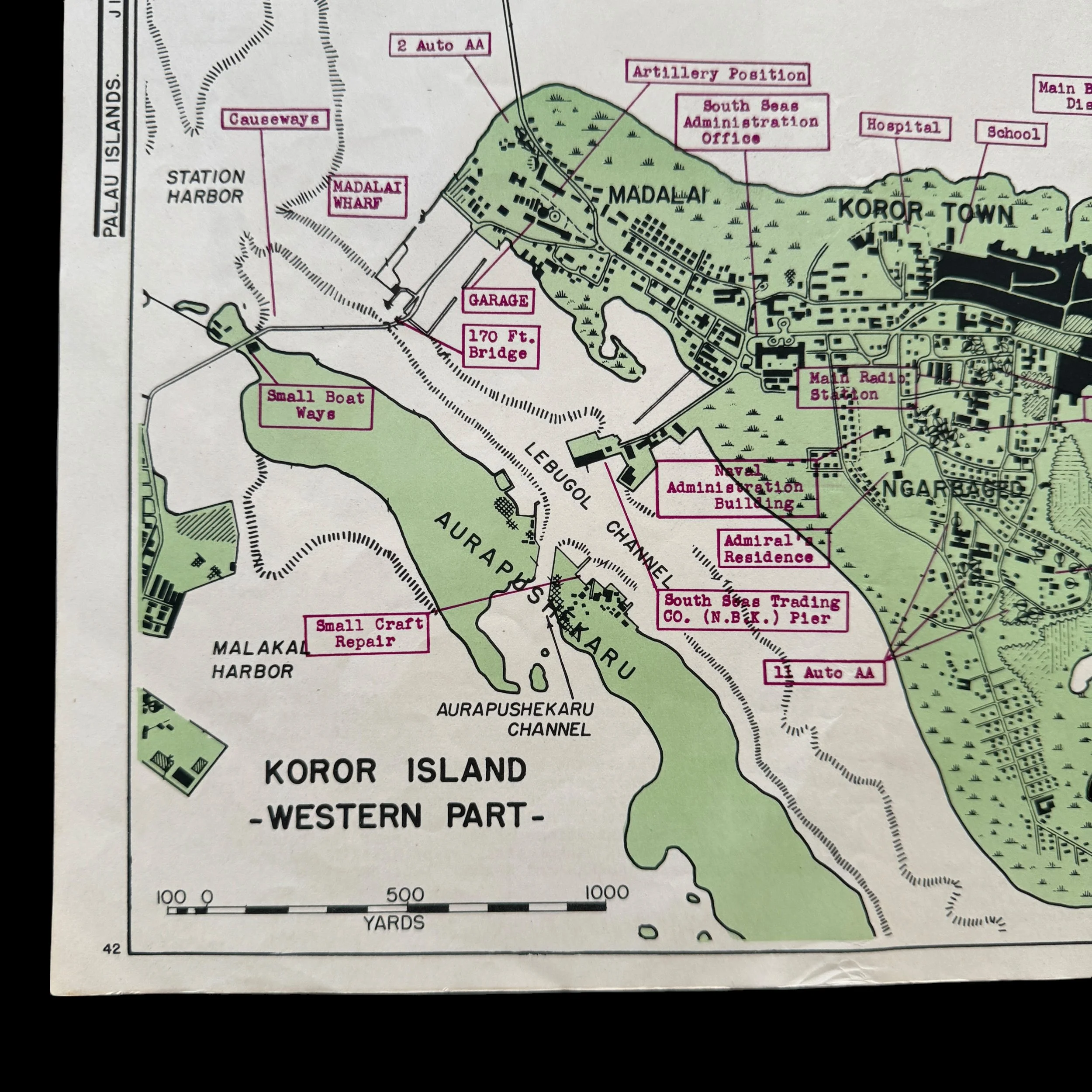
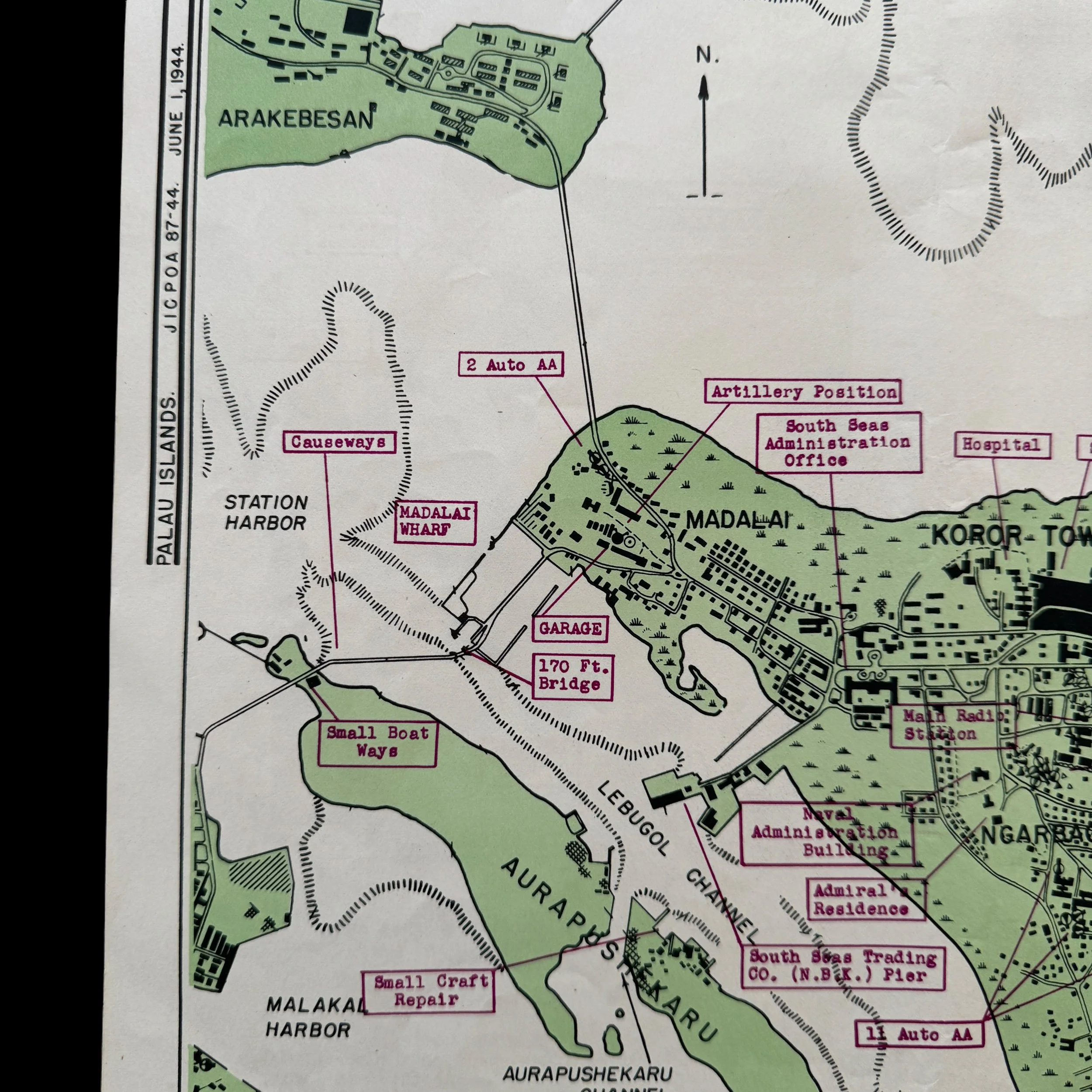
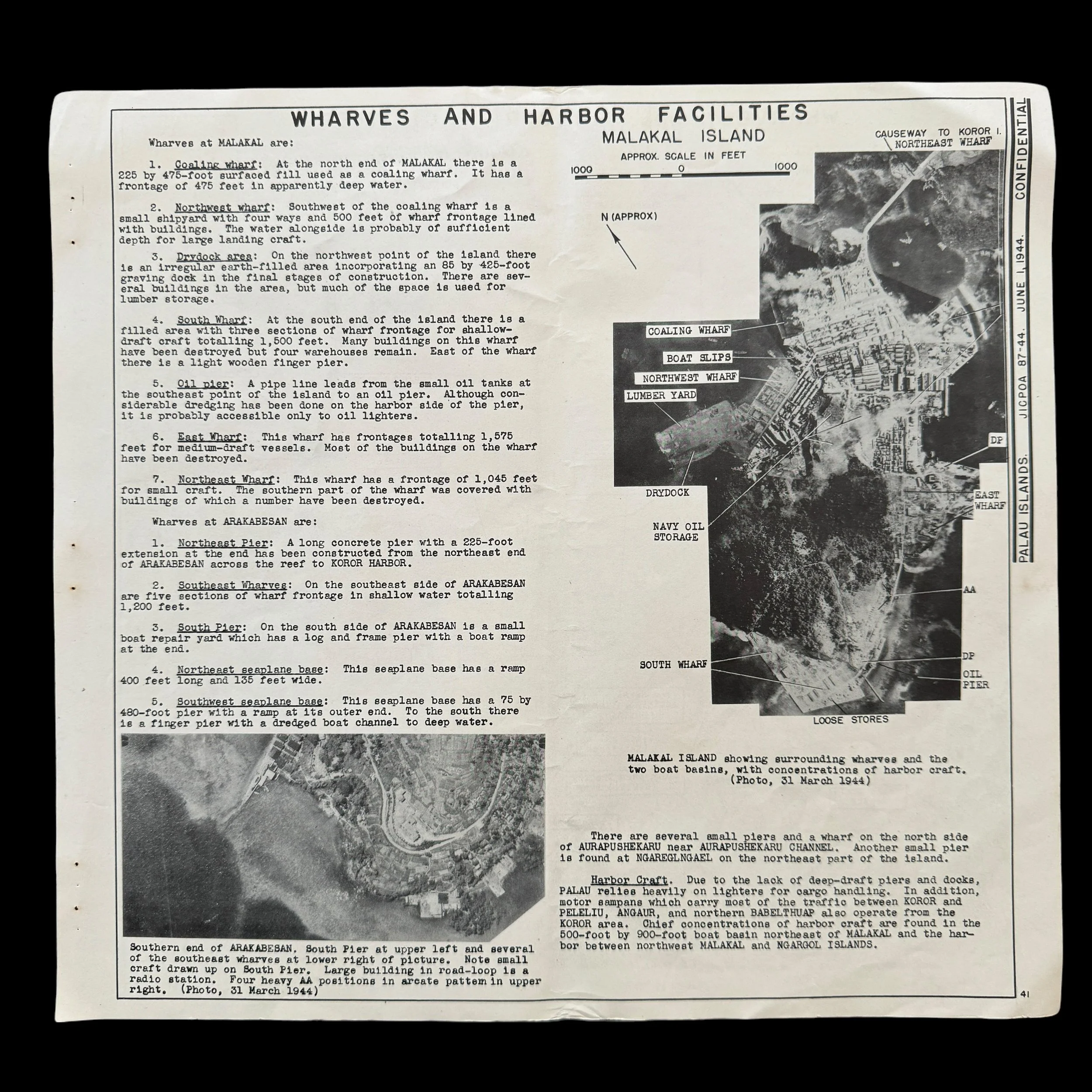

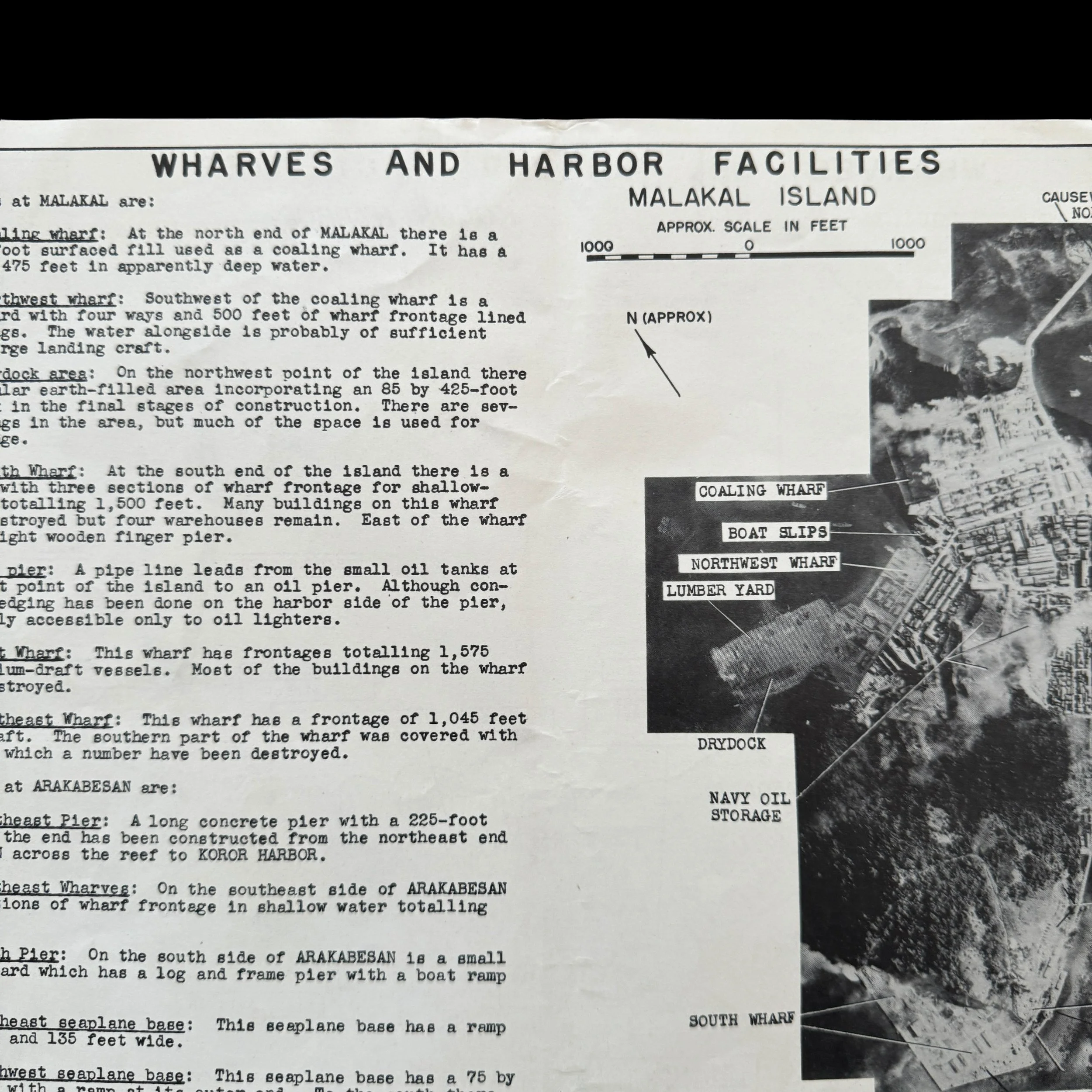

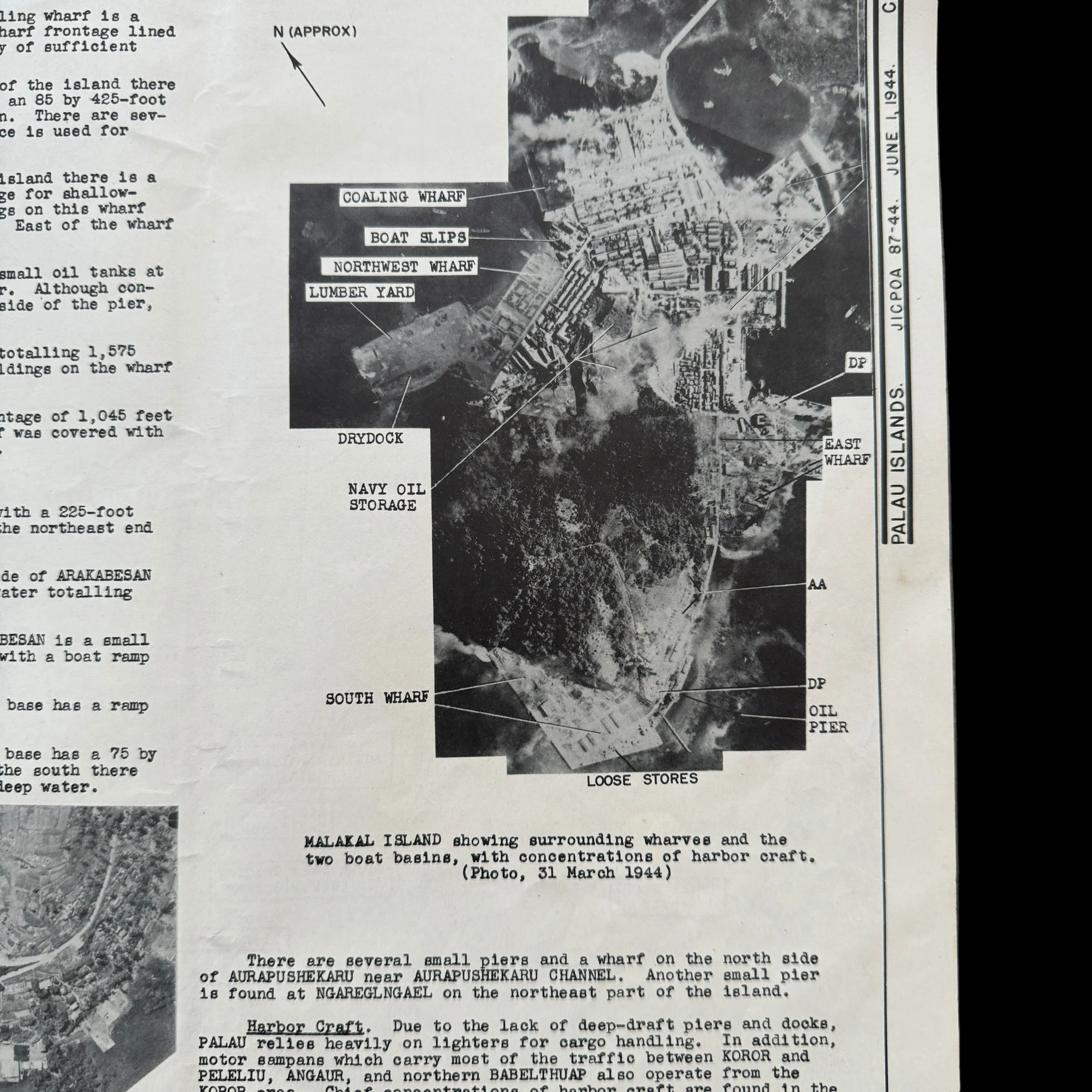

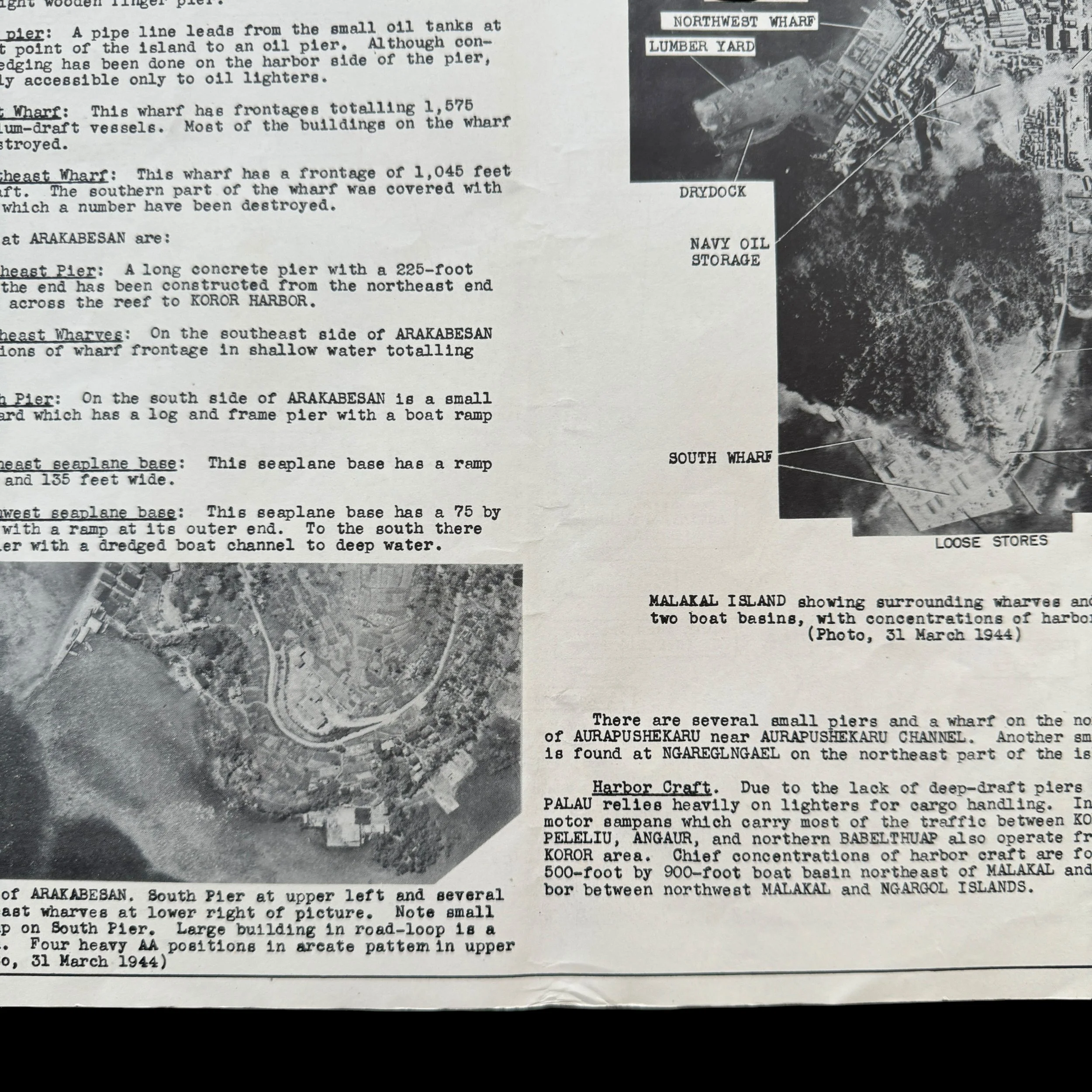
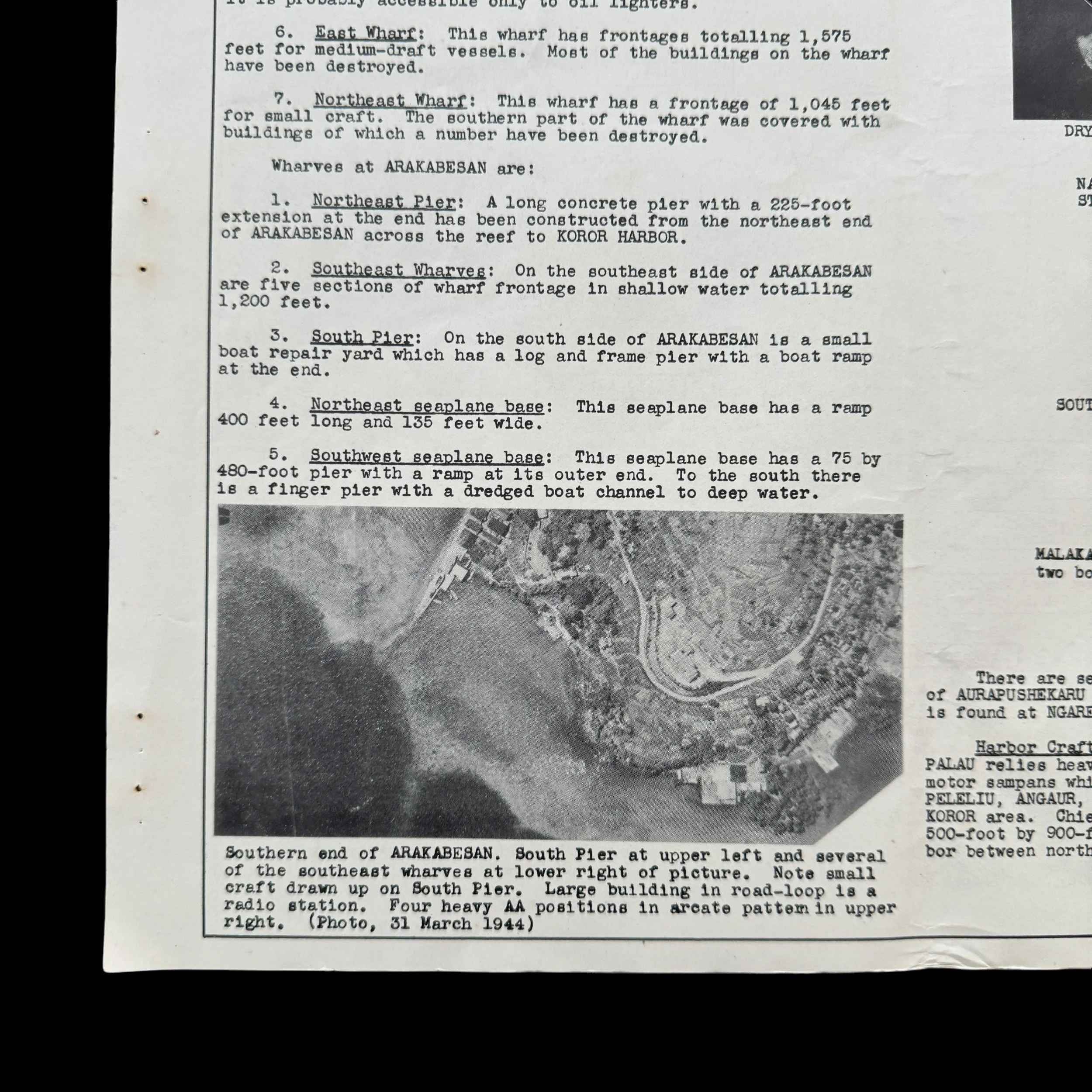
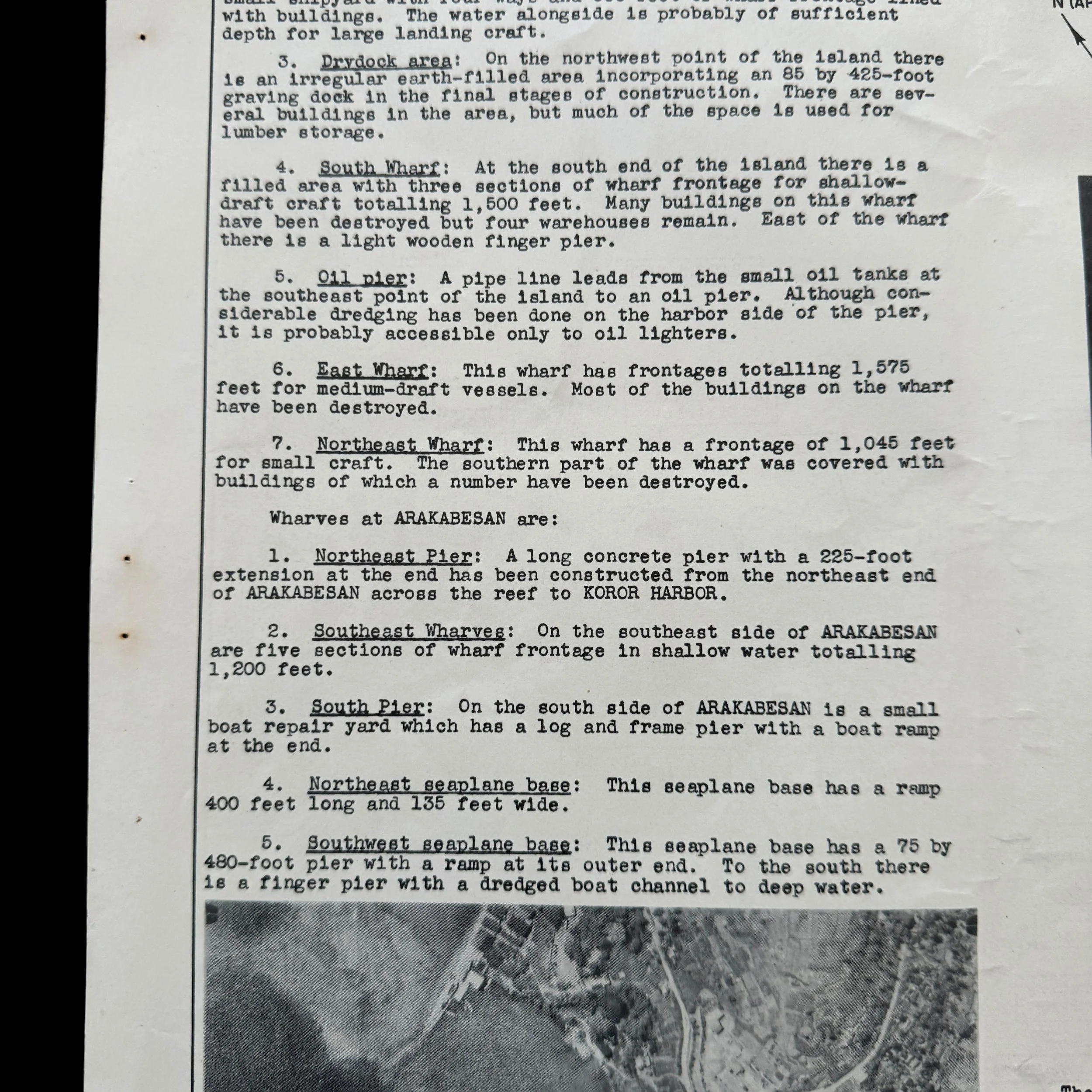


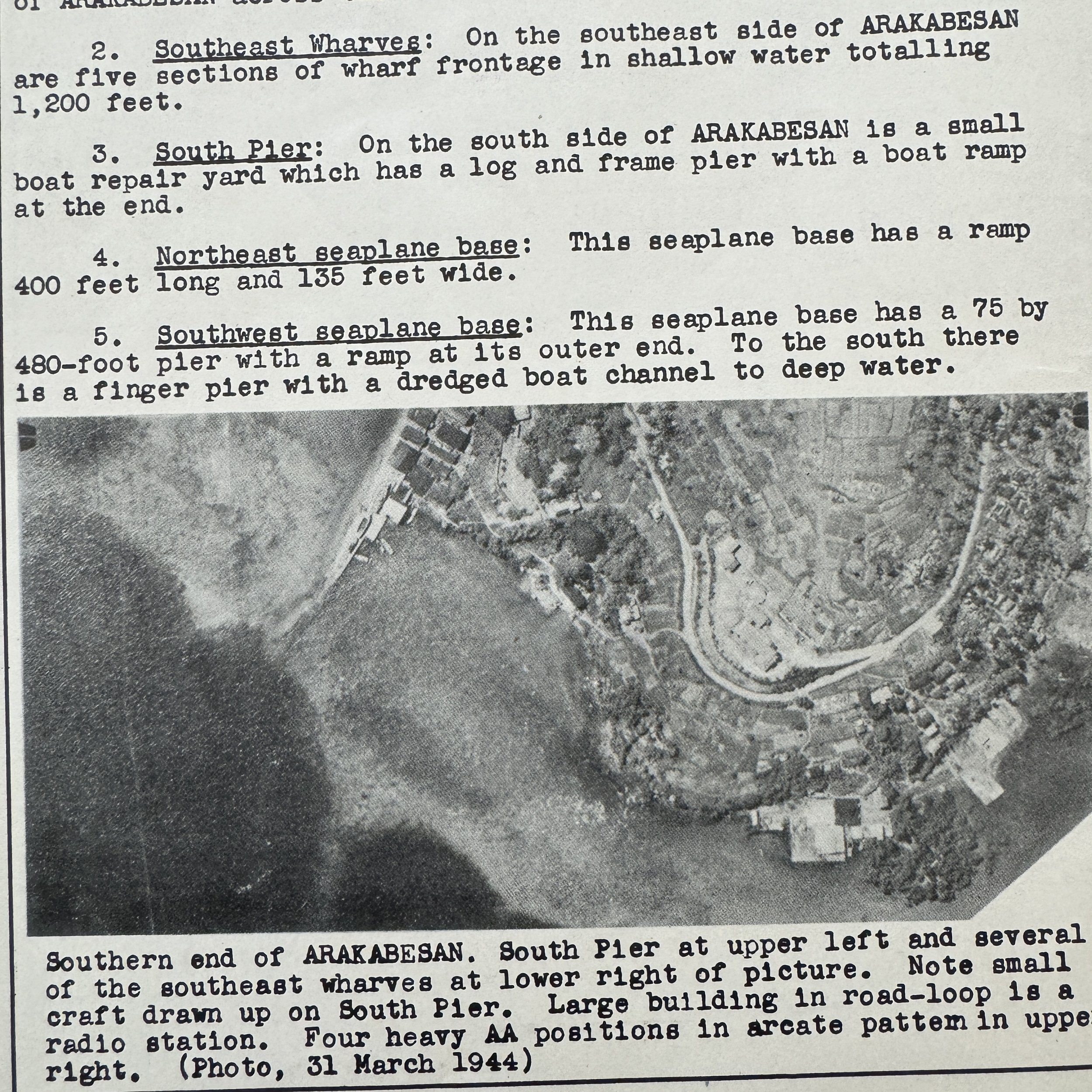




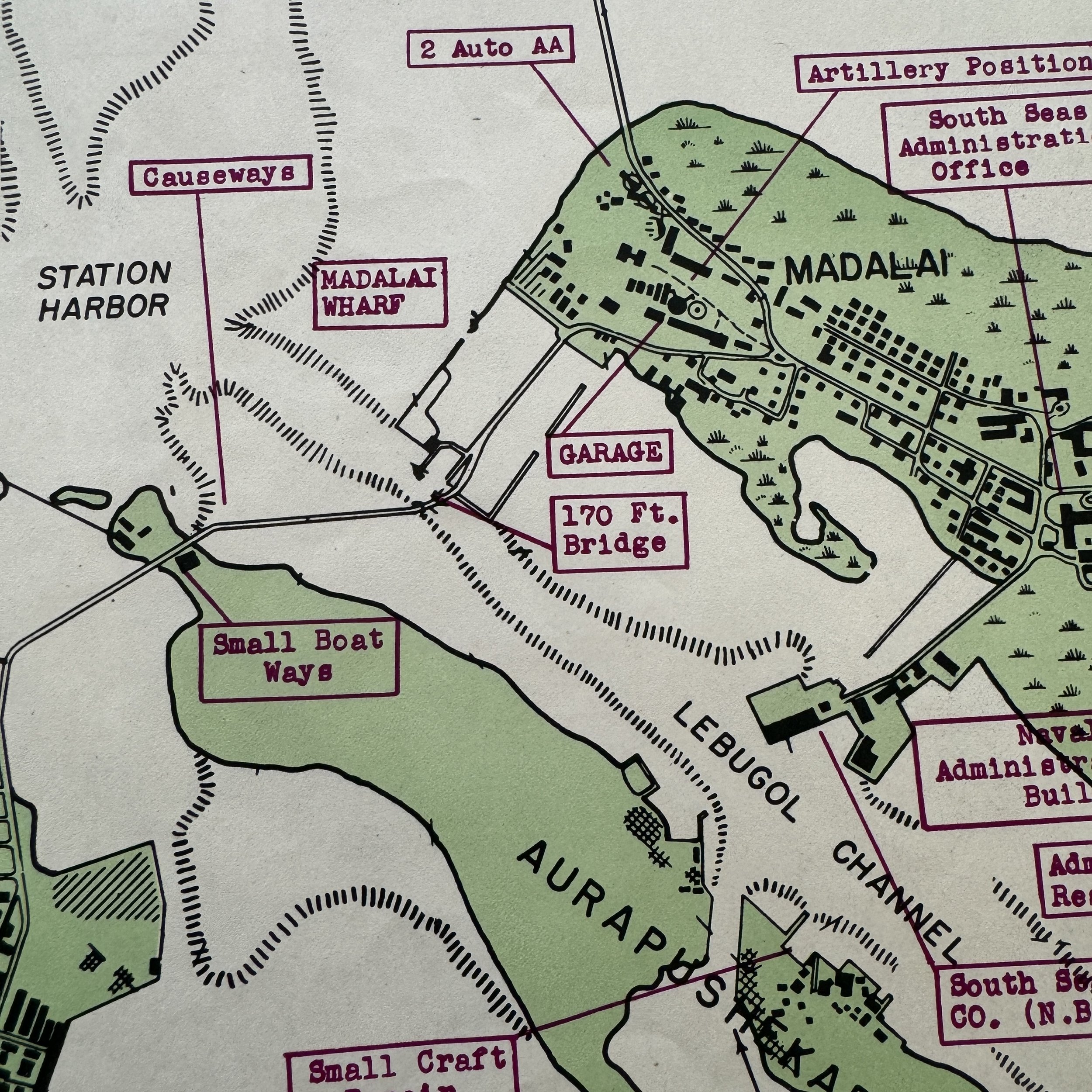



VERY RARE! WWII 1944 Operation Stalemate II - Palau Campaign (Koror Island & Malakal Island) CONFIDENTIAL Combat Intelligence Invasion Maps (Double-Sided)
Comes with a hand-signed C.O.A.
Size: 13 x 14 inches
This incredibly rare and museum-grade WWII artifact is an original World War II Operation Stalemate II CONFIDENTIAL marked combat intelligence invasion maps (double-sided).
As per military classification guidelines at the time, it states, “It is recommended that "Top Secret" material - Operation Plans and Orders - be reclassified downward to "Secret or Confidential" prior to the start of an operation by a sufficient length of time to permit of adequate and timely distribution to commanders and officers and concerned. Only when in that area of combat theater can maps, reports, and plans be re-classified as “Restricted” to be used in combat and in the field.”
Dated June 1944 (3 months prior to the D-Day invasion of the Palua Islands) this map was a part of the largest amphibious operation in the Pacific to date, with more than 1,600 ships and craft and more than 800 aircraft deployed.
The Joint Intelligence Center Pacific Ocean Areas (JICPOA) played a pivotal role in producing military intelligence during World War II, particularly in the Pacific Theater. Established in 1943 under the command of Admiral Chester Nimitz, JICPOA was tasked with gathering, analyzing, and disseminating intelligence across the vast Pacific Ocean Area, covering millions of square miles of ocean and land. JICPOA’s multi-branch organization combined resources from the U.S. Army, Navy, Marine Corps, and other intelligence units, making it a hub for coordinated intelligence operations during the war.
One of JICPOA’s most significant contributions during WWII was in the preparation for amphibious assaults, such as the Battle of Peleliu in the Palau Islands, part of the larger Operation Stalemate II in 1944. JICPOA was responsible for producing detailed intelligence maps that were critical for the U.S. military's planning and execution of the invasion. These maps were created from aerial reconnaissance, submarine patrols, and photo interpretation, and they provided precise topographical details, enemy troop positions, and the layout of defensive installations, including the extensive cave networks that Japanese forces used for fortification.
For the Battle of Peleliu, JICPOA’s intelligence maps informed U.S. commanders about the island’s challenging terrain, fortifications, radio systems and more giving the U.S. forces a clearer understanding of what to expect. However, despite these detailed maps and military intelligence, the battle proved more difficult than anticipated due to the Japanese strategy of using fortified positions rather than a direct beach defense, leading to a protracted and costly engagement.
JICPOA’s ability to produce accurate intelligence maps underlined the importance of coordinated intelligence in modern warfare. The maps not only provided essential strategic insights but also saved lives by enabling U.S. forces to better prepare for the enemy’s defenses. In the Battle of Peleliu and other Pacific campaigns, JICPOA’s intelligence gathering and map production were critical in shaping the success of U.S. operations, contributing to the eventual Allied victory in the Pacific.
The Invasion of the Palau Islands with an Emphasis on the Battles of Koror Island and Malakal Island
The Pacific Theater of World War II was marked by some of the most brutal and strategically significant battles in modern history. One of the most crucial, though often overlooked, series of engagements took place in the Palau Islands, a small island group situated in the Western Pacific. The invasion of the Palau Islands, part of the U.S. military's larger "island-hopping" strategy, played a pivotal role in the Allied push toward the Japanese homeland. Among the most significant operations within the Palau campaign were the battles of Koror Island and Malakal Island, two central locations that, while less famous than the neighboring Peleliu, were critical to securing dominance in the Palau archipelago.
Strategic Importance of the Palau Islands
The Palau Islands held strategic importance for both the Japanese and Allied forces in the Pacific Theater. By 1944, the Allies, primarily led by the United States, had begun advancing westward across the Pacific, seizing islands and establishing air and naval bases to use as stepping stones toward Japan. Palau was of particular interest due to its geographical location. Situated east of the Philippines and southwest of Guam, the archipelago lay along the projected Allied route to Japan. The capture of Palau would enable the United States to establish airbases and disrupt Japanese lines of communication and supply, while denying the enemy a critical foothold from which they could potentially counterattack.
Within the Palau Islands, several key locations needed to be secured, including Peleliu, Angaur, Koror, and Malakal Islands. While the battle for Peleliu is often more well-known, the invasion and subsequent battles on Koror and Malakal Islands were equally vital. These islands housed important naval installations, supply depots, and airstrips that could be utilized by the Allies to dominate the surrounding sea lanes and provide logistical support for future operations in the Philippines and beyond.
Prelude to Invasion: Japanese Defenses
The Japanese forces occupying the Palau Islands had established formidable defensive positions by the time the U.S. forces began their assault. Anticipating an Allied invasion, the Japanese fortified the islands with a combination of caves, bunkers, and heavily entrenched gun emplacements. On Koror Island, the largest and most populated island in the group, these defenses were concentrated around key infrastructure, including docks, supply depots, and administrative buildings.
Malakal Island, located directly to the southwest of Koror, was similarly fortified due to its importance as a naval base. The island was home to several deep-water harbors, essential for maintaining the Japanese fleet in the Pacific. The proximity of Koror and Malakal made them mutually reinforcing; any attack on one island would inevitably involve action on the other. Together, they formed a critical junction for Japanese naval and logistical operations in the region.
By the time of the American invasion, the Japanese garrison on Koror and Malakal was composed of several thousand troops, including infantry, engineers, and naval personnel. Though these forces were heavily entrenched, they were increasingly isolated due to the success of Allied naval and air blockades, which had cut off the supply lines from Japan. This isolation would prove to be a decisive factor in the eventual outcome of the battle.
The Invasion of Koror Island
The U.S. military's plan for the Palau campaign initially focused on securing Peleliu and Angaur, followed by operations to neutralize Koror and Malakal. Koror, as the administrative center of the Palau Islands, was a high-priority target. In late September 1944, following the bloody landings on Peleliu and Angaur, U.S. forces began preparing for an assault on Koror. However, intelligence gathered from captured documents and prisoners of war suggested that the Japanese defenders on Koror might be willing to surrender if Peleliu fell. This prompted a shift in strategy; rather than a full-scale amphibious invasion, U.S. forces opted for a combination of naval bombardment and psychological warfare to force the Japanese to abandon their positions on Koror.
In early October 1944, U.S. Navy warships and aircraft from nearby carriers launched a sustained bombardment of Koror Island. The intent was to destroy key Japanese installations, disrupt defensive lines, and break the morale of the garrison. These bombardments were highly effective in damaging infrastructure and neutralizing Japanese artillery positions, but the defenders remained resolute in many areas.
As the bombardment continued, U.S. forces, aided by local knowledge from native Palauan islanders, carried out reconnaissance missions to gather intelligence on Japanese movements. These efforts paid off; the Japanese garrison on Koror, now cut off from reinforcements and supplies, began to withdraw from key positions, retreating into the island's interior. Rather than risk a costly land battle, U.S. commanders decided to maintain the bombardment and isolate the remaining Japanese forces through blockades and airstrikes.
By the end of October, U.S. forces had effectively neutralized Koror as a Japanese stronghold. The island was secured without the need for a large-scale amphibious landing, thanks to the combination of naval power, air superiority, and psychological operations. Many Japanese soldiers on the island either surrendered or retreated into the island's dense jungles, where they were gradually eliminated by U.S. patrols over the following months.
The Battle of Malakal Island
While Koror fell relatively quickly to American forces, the battle for Malakal Island was more protracted. Malakal's deep-water harbor made it a valuable asset for both the Japanese and the Allies. The island also housed several important supply depots and repair facilities for Japanese warships, making it a key logistical hub.
Following the fall of Koror, U.S. forces turned their attention to Malakal. Like Koror, the island had been heavily bombarded by American naval and air forces in the preceding weeks. However, the Japanese defenders on Malakal, consisting of several hundred naval personnel and soldiers, had constructed extensive defensive fortifications, including anti-aircraft batteries, coastal artillery, and bunkers designed to withstand bombardment.
In early November 1944, U.S. Marines and Army units launched an amphibious assault on Malakal Island. The initial landings were met with heavy resistance, as the Japanese defenders targeted landing craft with artillery fire and machine guns. However, the superior firepower of the American forces, coupled with close air support from carrier-based aircraft, allowed the Marines to establish a beachhead on the southern coast of the island.
The battle for Malakal Island quickly devolved into a brutal, close-quarters engagement as U.S. forces advanced inland, encountering stiff resistance from Japanese defenders entrenched in caves and bunkers. The rough terrain of the island, marked by dense jungle and rocky hills, further complicated the American advance. However, the Marines and Army soldiers pressed forward, gradually overcoming Japanese positions with a combination of flamethrowers, grenades, and artillery support.
By mid-November, the Japanese defenders on Malakal were running low on supplies and ammunition. Isolated from reinforcements and subjected to relentless bombardment, many Japanese soldiers chose to launch desperate suicide charges against American positions rather than surrender. These final attacks were repelled, and by late November, organized Japanese resistance on Malakal had ceased. The island was fully secured by U.S. forces, and its harbor facilities were soon put to use as a staging area for further operations in the Pacific.
Aftermath and Legacy
The successful capture of Koror and Malakal Islands marked the culmination of the broader Palau campaign and contributed significantly to the overall Allied strategy in the Pacific. The fall of these islands allowed the U.S. military to establish airbases and naval facilities that would prove crucial in supporting the upcoming invasion of the Philippines. Moreover, the elimination of Japanese forces in the Palau Islands helped to sever the remaining connections between Japan and its remaining possessions in Southeast Asia.
While the battles for Koror and Malakal are often overshadowed by the more famous engagements at Peleliu and other Pacific islands, they nonetheless played a key role in the overall Allied victory in the Pacific. The courage and determination of the U.S. Marines and Army soldiers who fought in these battles exemplified the tenacity required to overcome entrenched Japanese defenses throughout the island-hopping campaign. The successful capture of Koror and Malakal Islands contributed to the eventual defeat of Japan, bringing the Allies one step closer to victory in the Pacific War.
In retrospect, the invasion of the Palau Islands, including the critical battles on Koror and Malakal, demonstrated the complexity and difficulty of the Pacific campaign. These engagements highlighted the strategic importance of seemingly minor islands in the grand scope of the war, as well as the significant human cost of the fighting. Though the battles for Koror and Malakal may not hold the same place in public memory as larger conflicts, their importance in the Pacific Theater cannot be overstated.